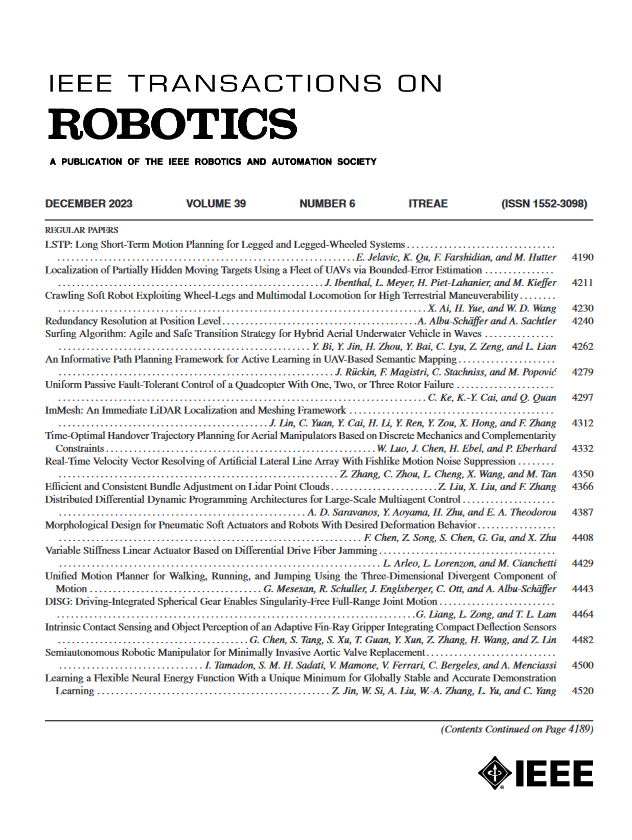Quasi-Static Modeling and Controlling for Planar Pushing of Deformable Objects
IF 9.4
1区 计算机科学
Q1 ROBOTICS
引用次数: 0
Abstract
Pushing is an essential nonprehensile manipulation for robots to achieve complex tasks. Until now, object rigidity remains one of the common assumptions in robotic pushing. To endow robots with the advanced capability of pushing deformable objects, we propose a mathematical model and control method for the planar pushing of deformable objects. Given the robotic end-effector velocity or position input, the model predicts the motion and deformation of the pushed object, which is developed based on the quasi-static finite element analysis with reasonable simplification, considering the contact conditions of nodes with both the operator and the contact surface. By combining the designed model to estimate the state of the object and interactions with the environment, we further propose a method based on model predictive control to realize the pushing control. With a specialized simplified model to accelerate prediction, the controller is solved by iterative linear quadratic regulator with a dynamic weight, which balances the object motion and pushing area adjustment. The accuracy and efficiency of the proposed deformable model are validated by comparing the theoretical results with the experimental ones under different conditions, and the controller is verified by simulation and experiments.求助全文
约1分钟内获得全文
求助全文
来源期刊

IEEE Transactions on Robotics
工程技术-机器人学
CiteScore
14.90
自引率
5.10%
发文量
259
审稿时长
6.0 months
期刊介绍:
The IEEE Transactions on Robotics (T-RO) is dedicated to publishing fundamental papers covering all facets of robotics, drawing on interdisciplinary approaches from computer science, control systems, electrical engineering, mathematics, mechanical engineering, and beyond. From industrial applications to service and personal assistants, surgical operations to space, underwater, and remote exploration, robots and intelligent machines play pivotal roles across various domains, including entertainment, safety, search and rescue, military applications, agriculture, and intelligent vehicles.
Special emphasis is placed on intelligent machines and systems designed for unstructured environments, where a significant portion of the environment remains unknown and beyond direct sensing or control.
 求助内容:
求助内容: 应助结果提醒方式:
应助结果提醒方式:


